It’s been about half a year since the last update on my home lab setup. Initially I planned to do this annually, but a lot has changed since the last time, so I decided to do a quick update.
Overview
A big change from last year is that I moved to a new place and gained control over my own router (and hence the whole network!). It made the architecture much simpler by getting rid of some hacky stuff.
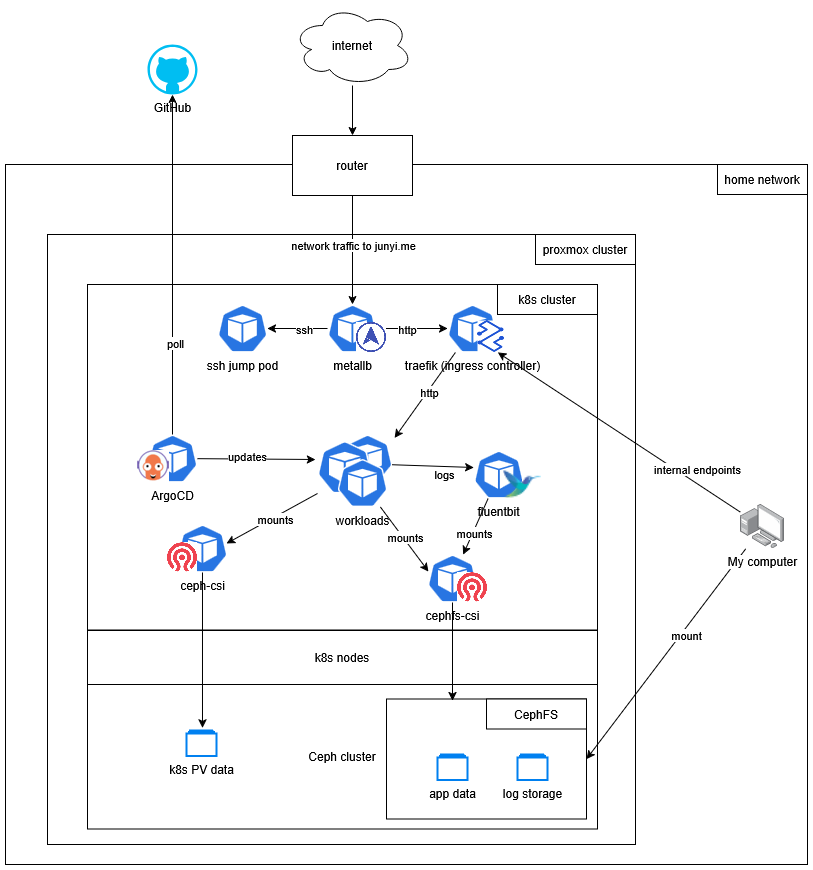
External-facing applications
These are the applications that are accessible from the internet. Some of them are for my personal use.
| Application | Description |
|---|---|
| Domain entrypoint | Landing page for my domain |
| Portfolio website | My personal portfolio website |
| This blog | My personal blog |
| Review Planner | A tool for planning code reviews (WIP on GitHub) |
| Commafeed | A self-hosted RSS feed reader |
| Linkwarden | A self-hosted website archiving service |
| Static file server | An nginx file server that I use for sharing my resume, etc. |
CI/CD
ArgoCD continues to be my go-to tool for GitOps. It allows me to manage my Kubernetes resources declaratively in a git repository, and automatically deploys changes to the cluster.
In this past few months, I focused on setting up proper CI/CD pipelines for my applications. Now all my applications are built and deployed automatically when I push changes to the repository.
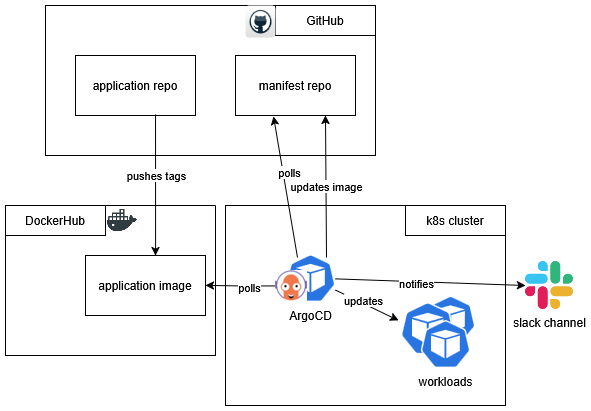
For each application, when there is a new change in repository,
- GitHub Actions pushes a new image to the container registry.
- ArgoCD Image Updater picks it up and updates the manifest repository with the new image tag.
- ArgoCD detects change in the manifest repository and deploys the new image to the cluster.
- Whenever there is a change in deployment, ArgoCD sends a notification a Slack channel.
Related posts:
- CI/CD pipeline with GitHub Actions and ArgoCD Image Updater
- GitHub Actions Runner on your Kubernetes cluster
- Using GitHub Actions to automatically build and push docker images
- Configuring Slack notifications for ArgoCD and Remark42
Observability
I finally have a centralized log aggregation mechanism configured. My initial approach was to use Promtail, Loki, and Grafana, but I found it to be an overkill for my needs. All I wanted was a highly available log storage that allowed me to look through the logs with vim, less, and similar tools.
Therefore I resorted to using fluentbit to collect logs from all pods, and send them to a syslog-ng pod that’s also running in the cluster. The syslog-ng pod is configured to store logs in a persistent volume backed by CephFS, which I can access easily from my home network.
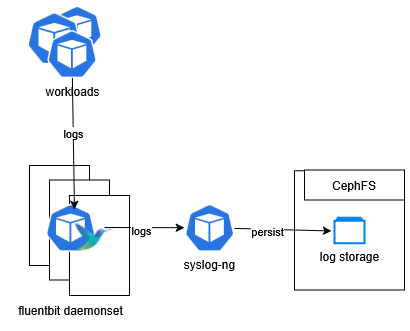
The result looks something like this:
|
|
I also deployed a homepage for myself to get to different applications / management consoles quickly.
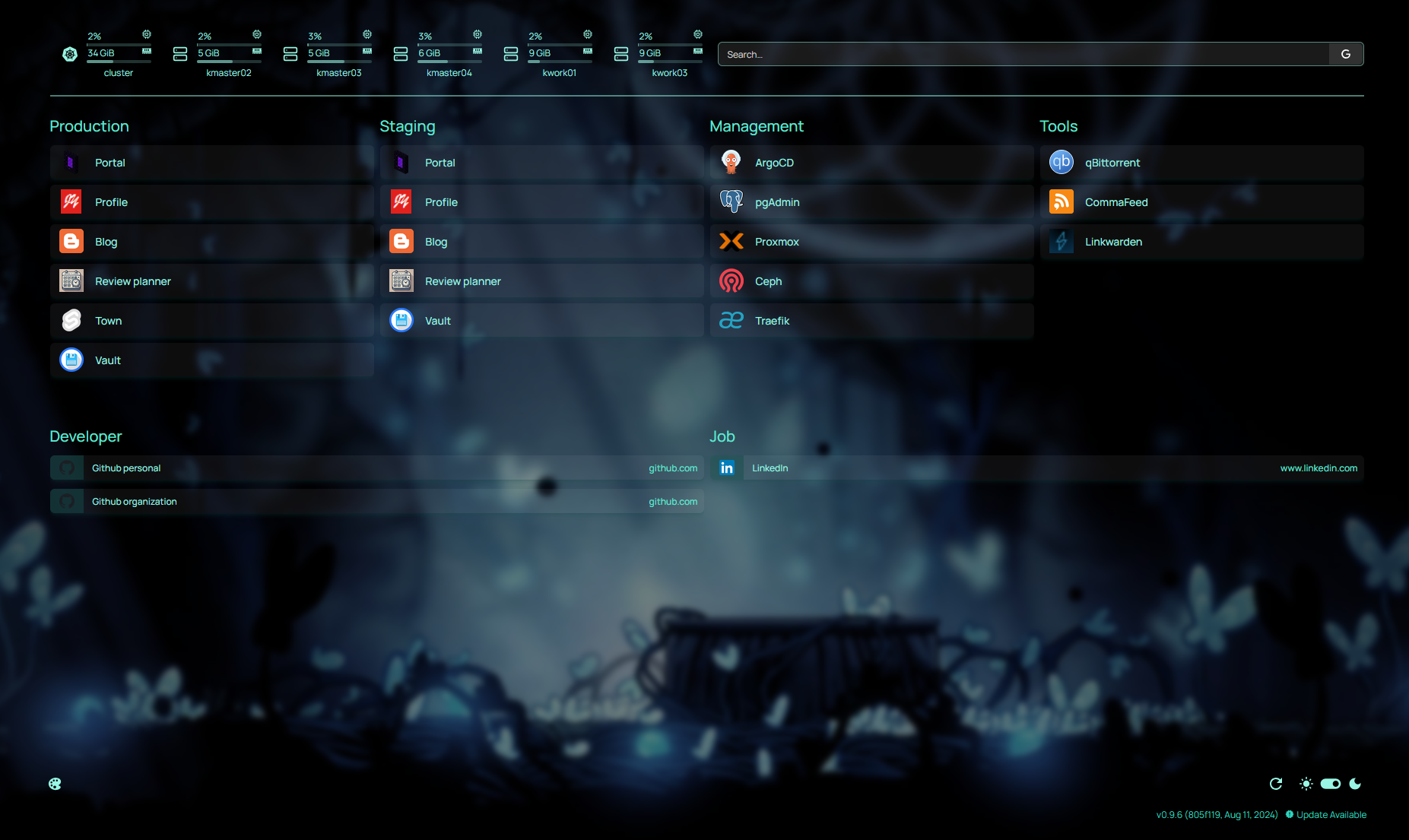
Related posts:
Infrastructure
A lot has happened to the infrastructure in my home lab since the last update. I migrated from using kvm with libvirt to Proxmox, and set up a Ceph cluster for distributed storage. By doing that, the whole architecture became simpler to manage and more reliable.
Two additional Dell Optiplexes were added to the cluster, bringing the total number of physical hosts to five.
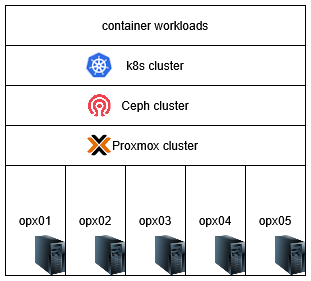
In the post: Load balancer for Proxmox cluster, I set up a load balancer for the Proxmox management interface, so that I can just use the hostname pmx.i.junyi.me to access the management interface.
Related posts:
- Load balancer for Proxmox cluster
- Setting up Ceph as the storage backend for Kubernetes
- Mounting CephFS in Kubernetes pods
Network
Following are the primary upgrades to my network setup:
- Ditched Tailscale and configured port-forwarding directly on my router.
- Set up bind9 as a local DNS server for internal domain resolution, paired with traefik as reverse proxy. For example,
blog.junyi.meis the publically accessible blog, butblog.i.junyi.meis the internal domain that points to the testing version of the blog.
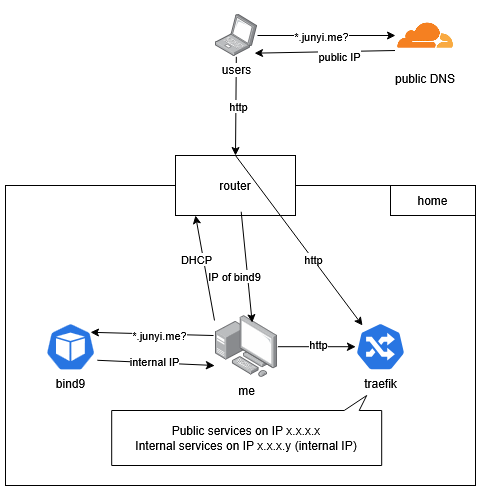
As written in this post: Setting up an internal network and DNS with Kubernetes, traefik, and bind9, traefik is responsible for exposing public and internal services on separate IPs (services).
Still using metallb for load balancing, and cert-manager for managing TLS certificates.
Related posts:
- Setting up an internal network and DNS with Kubernetes, traefik, and bind9
- Redirect http to https with k3s + Traefik
Conclusion
It’s been a fun half year. I learned a lot about CI/CD, logging, and infrastructure management, but I still have a lot to learn on each of those topics and more. There are some potential improvements that I can think of right now:
- Backup and restore strategy for the kubernetes cluster
- Monitoring and alerting system using something like Prometheus and Grafana
- Infrastructure as code using Terraform
- Centralized secrets management using something like HashiCorp Vault
As for the hardware side of things, I really want to upgrade my network to 10Gbps, and add some additional storage for backups.
